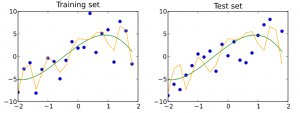In today’s world it is more important than ever for educators to prepare students for the future. Especially with the rapid technological evolution and daily engineering innovations. As STEM teachers, we are tasked with much of the burden of instilling interest and excitement in scientific fields for future employment. Most STEM curriculums are designed to support cross-cutting concepts and interdisciplinary skills, however opportunities to support students’ math curriculum are often missed.
I’m sure we are all too familiar with the argument “I’m never going to use this!”, but the STEM classroom is a great opportunity to show students real-life examples of how their hard work in math class can be utilized. We will focus on math concepts that are applicable for almost every concept and can help you drive instruction.
Comparing Data Sets (Statistics)

Experiments are always a fun activity and typically take days or weeks of planning to go smoothly. In this process, it can be difficult to shift the focus entirely from the scientific phenomena to something concrete. Teaching your students to collect data and operationalize it into reasonable conclusions is likely the most important STEM topic in terms of career readiness.
Try to include data-tracking components during experiments or simulations you perform in the classroom. You can utilize these to help students better understand measures of central tendency. Or even to help understand more complex ideas like standard deviation. (and what it tells them about their data!) Encourage the use of discovery in conjunction with math by allowing students to decide what they think is important to track and what that will tell them about their experiment.
Creating and Analyzing Graphs

Graphical representation of data can be a great way to help students observe changes in large sets of numbers. There are thousands of tools online to create graphs or free data sets that show changes over time. You can further build these skills by creating lines of best fit, finding averages, and recognizing trends.
My favorite aspect of graphs is that there is often more than one effective way to portray a dataset. Let students decide what they think will best portray their point. Encourage the use of color and font to emphasize particular areas and draw attention to important graphics!
 Building Arithmetic Skills
Building Arithmetic Skills
STEM is a great opportunity to incorporate many of the basic skills students obtain in other classes. In many cases, there is an expectation that students are coming to our classes with a level of reading fluency, arithmetic and comprehension. Do not be afraid to have exercises that utilize these skills! Basic arithmetic skills will help the students to better manipulate numbers in their experiments. It is also necessary for higher level physics principles, stoichiometry, volume, and many more!
Collaboration
Lastly, collaboration is going to be key in ensuring that you are bringing appropriate math concepts into your classroom. These types of activities will work given that the students have some familiarity or mastery over the topic. Effective collaboration with the math teacher can allow you to differentiate material for different student levels and have content move fluidly through both workspaces.

In some situations, it will make sense to give STEM examples to the math teacher. (and in my experience, no teacher ever hates free materials!) Putting in the extra effort to cross-cut the curriculum can make a world of difference in application and comprehension for our students!
What are some ways you utilize the “M” in STEM? Leave your suggestions in the comments below! As always, if you have any questions or suggestions about STEM, 3D printing, electronics, or engineering please leave a comment below or email me at VincePrints3D@gmail.com.
Want to bring Math into your classroom? Check out our Math products:








Leave A Comment